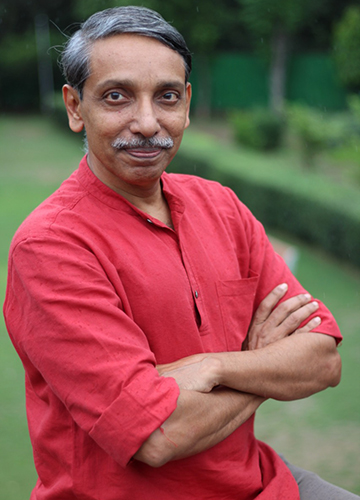Q/ It is estimated that CUET would become the largest college entrance exam in the world. How does that solve the problem of cut-throat competition for admissions to top colleges?
A/ First of all, the introduction of CUET is to overcome the challenges that our students are facing. It is not to set any world record. Unfortunately, when we talk about undergraduate admissions, the cut-off marks in many colleges are ridiculously high. We decided that we should take this pressure away from the students.
Point two is that we have a large number of boards across the country. And in some of these boards, it is very easy to score 95 per cent marks. In others, it may be difficult to get even 80 per cent. We wanted to remove this disparity.
Q/ Students are attending CUET coaching because they are clueless about how to prepare. Do you think that this dependence on private tuition will become a norm, like it is in the case of medical and engineering entrance exams?
A/ We have about 16,000 IIT seats and some 12 lakh [aspirants]. So the competition is one to 75. But if you consider BA, BCom, BSc and similar courses we are offering in central universities, we have about 1.2 lakh undergraduate seats. Fortunately, many other top universities in the country, such as the Tata Institute of Social Sciences, are joining CUET this year. So the number of seats may go up to three lakh. Some 12 lakh students are contesting for these three lakh seats; so the competition is one to four. Since the competition is low, my request to students is to focus on their board syllabus.
Q/ The reference material for CUET is mostly NCERT books, and not all boards follow the NCERT curriculum. Students there might have trouble preparing for the exam.
A/ We do agree that there is some [syllabus-related] difference between state boards and NCERT. Nearly 21 states have adopted NCERT syllabus; the remaining states are using state board syllabi. So, to overcome this problem, we are doing two things: In each test paper, we are giving 50 questions, but the students have to answer only 40, so there is a wide choice. Two, we have experts from across the country to set question papers and they are also sensitised about the small differences between state board and NCERT syllabi.
Q/ Educationists are worried about the reduced emphasis on board exams. They say there is a danger of students not developing holistically, as they will be focused on CUET.
A/ I would like to tell the educationists that CUET is not new at all. It started in 2010; fourteen central universities had been conducting it. All that has now happened is that more central universities have joined this exam. It is not that the students will stop focusing on their board exams because these universities have joined CUET.
In JEE (the joint entrance exam for admission to engineering courses), some 12 lakh students apply to get selected to IITs. Although the minimum percentage required is 75 per cent, you typically see that majority of students have scored more than 80 per cent in their board exams. Can this happen if they neglected their studies in school?
Those who say that students will neglect board exams—do they have any data to substantiate this? Has there been a scientific study?
Q/ The University Grants Commission wants more universities, including those run by states and private managements, to join CUET. What could be some of the challenges in making everybody come on board?
A/ You see, this is a voluntary process. CUET is, of course, compulsory for all central universities. I am sure other universities will see the benefits, sooner or later. I have been meeting vice chancellors of state-funded universities in every state. So far, I have completed meetings in almost 20 states. I have been telling them to let students experience a national-level entrance test. Why take away the opportunity [to get admission to a top central university] from them?
All said and done, central universities have better infrastructure and are well-funded. They have very good teachers, and good research is happening. So why deprive students of a chance to join one of these universities?


